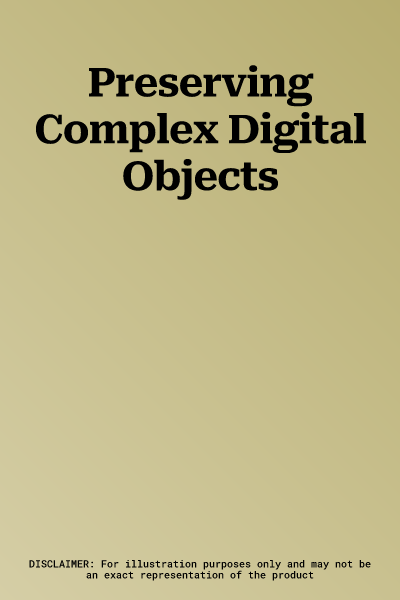This ground-breaking edited collection explores the challenges of
preserving complex digital objects such as simulations, visualisations,
digital art and video games.
Drawing on the outputs of the JISC-funded Preservation of Complex
Objects (POCOS) symposia, enhanced with specialist pathfinder solutions,
this book will cover topics such as the legal and technical challenges
of preservation, curation and authority, and digital archaeology.
Written by international experts from a broad background of library,
collecting institutions, information and computer science, and digital
preservation backgrounds, this collection showcases the state of the art
of the discipline and brings together stakeholder perspectives from
across the preservation community. The collection is structured around
six parts:
Why and what to preserve: creativity vs preservation
The memory institution: data archival perspectives
Digital preservation approaches, practices and tools
Case studies
A legal perspective
Pathfinder conclusions
Readership: Academics and students on digital preservation, digital
humanities and information management courses, and those working in
preservation and collecting for memory institutions will find this a
valuable read. It will also be of particular interest to computer
scientists, artists, games and emulation communities, archaeologists and
digital forensic scientists.
This ground-breaking edited collection explores the challenges of
preserving complex digital objects such as simulations, visualisations,
digital art and video games. Drawing on the outputs of the JISC-funded
Preservation of Complex Objects (POCOS) symposia, enhanced with
specialist pathfinder solutions, this book will cover topics such as the
legal and technical challenges of preservation, curation and authority,
and digital archaeology. Written by international experts from a broad
background of library, collecting institutions, information and computer
science, and digital preservation backgrounds, this collection showcases
the state of the art of the discipline and brings together stakeholder
perspectives from across the preservation community. The collection is
structured around six parts; 1) Why and what to preserve: creativity vs
preservation; 2) The memory institution: data archival perspectives; 3)
Digital preservation approaches, practices and tools; 4) Case studies;
5) A legal perspective; 6) Pathfinder conclusions. Academics and
students on digital preservation, digital humanities and information
management courses, and those working in preservation and collecting for
memory institutions will find this a valuable read. It will also be of
particular interest to computer scientists, artists, games and emulation
communities, archaeologists and digital forensic scientists.

